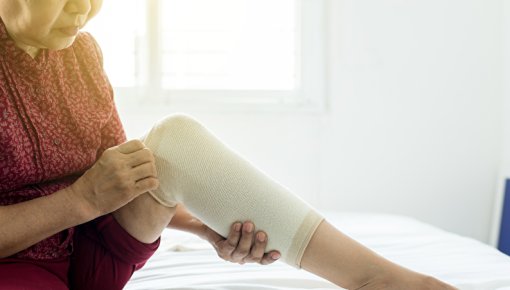Effect and use of medical compression stockings

Medical compression stockings are an important part of treating post-thrombotic syndrome. They are usually well tolerated. Putting them on and taking them off can feel a little strange at first. It is usually enough to wear the compression stockings on the affected leg.
To make sure blood doesn't build up in the leg veins, it is a good idea to move regularly and exercise your calf muscles. Regularly elevating your legs takes the strain off the veins and relieves the symptoms of post-thrombotic syndrome (PTS).
Wearing compression stockings is an important part of treating PTS. Using them properly and taking good care of them is important to avoid chafing the skin and tearing the stockings.
But it's important to know that over-the-counter compression stockings and socks, like those sold in sports shops, don't meet the requirements of medical compression stockings. That means they aren't suitable for the medical treatment of vein conditions like post-thrombotic syndrome.
